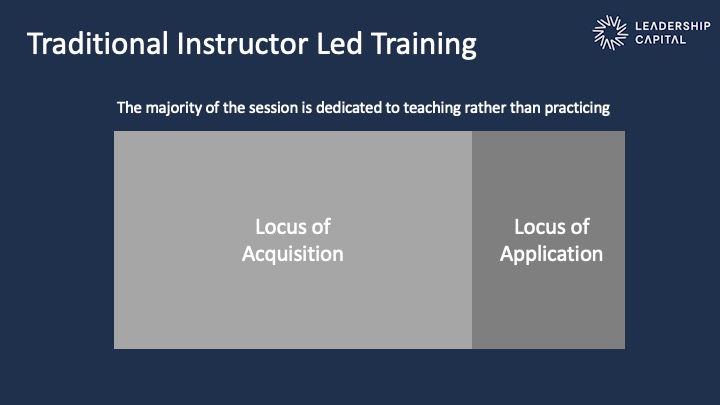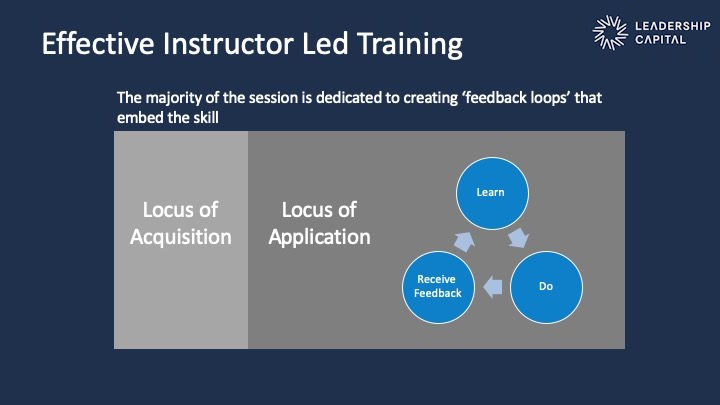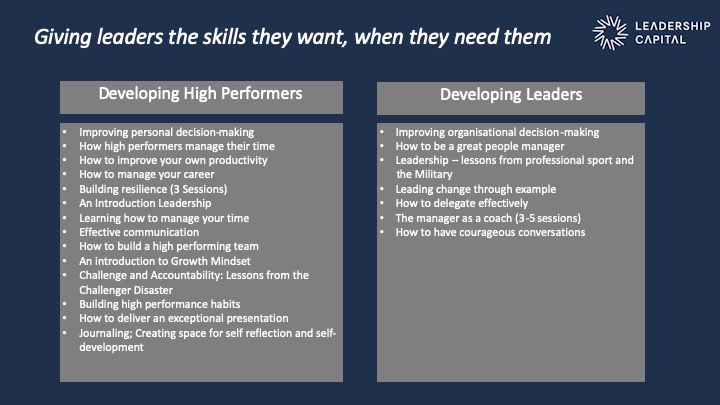Developing People: Give them what they want, when they need it
The reason I have dedicated my professional life towards leadership development is because I know how much of an impact strong leadership can have on organisations. So much time is wasted because of…
- A lack of clarity on what we’re working towards
- Clear boundaries and responsibilities between people and departments
- Competing with peers rather than collaborating
- Slow execution due to a lack of accountability
Essentially, these are symptoms of leaders not doing their jobs.
But I’m sympathetic because I don’t think it is their fault. Most people get promoted because they’re good at something. This reinforces the mindset of the doer as opposed to the mindset of the leader. Leadership development is largely dedicated to the people at the top of organisational pyramid when instead it should be focussed on those people taking their first steps as leaders.
One of the areas that I have been studying recently relates to learning new skills. The following article shares what I have learnt.
If you want to design training or develop people, you need to understand the following terms.
The locus of Acquisition: When you learn something
The locus of Application: When you use it
One of the biggest contributors towards ’skill fade’ is the distance between the locus of acquisition and the locus of application. Whenever you’re teaching someone how to do something, you want to consider how to reduce this gap as much as possible.
If you learn to drive a car, you want to start using that skill as quickly as possible. For most 17 year olds, they can’t wait for the independence and freedom that comes with learning to drive. But if you’ve learnt how to drive and then not practiced the skill soon afterwards. If there is a long gap between the locus of acquisition and the locus of application, it becomes harder to remember what you were taught. Confidence in using the skill drops. This can create a vicious cycle to the point that ‘you’re legally allowed to drive’ but lack the confidence and currency in the skill to be able to do it.
In high performing industries, they talk about ‘currency’. How current are you at using that weapon system or operating that machinery? You might be trained but are you current? I could probably pick up a Sig Pistol and safely operate it. It’s been seven years since I used one and I don’t think I’d shoot myself in the foot but I’d be vary wary of my lack of currency which would in turn affect my confidence at handling the weapon system.
In high performing industries, there is an understanding that skill fade is very real and it impacts performance. If people are not practicing something regularly, they tend to forget how to do it.
How does this impact the development of People?
The first point is that if you’re designing something, any form of development that requires people to learn a skill, you need to get them practicing the skill as soon as possible. Reduce the gap between the locus of acquisition and the locus of application.
The next point is to keep the instructional element relatively short. Explain what people need to do and why but keep it brief. Let them practice the skill, give them feedback and let them refine their approach. If you had one hour to teach something to a group of people, give them 7-10mins of instruction and then create the space for them to try it out. Let them do it over and over again, getting feedback from their peers and anyone with a third party perspective. This deliberate practice coupled with feedback will give them a real sense for how it feels to practice the skill.
I have been fortunate enough to spend a bit of time with Harlequins Rugby Team watching them practice. I have watched how the coaches break down ’the tackle’ into a few key principles and then practice it over and over again. After a period, the players are told to stop, hydrate and discuss how they could improve the drill.
This short, direct brief coupled with deliberate practice has really changed my perspective on developing people.
Give people what they need, when they want it. It’s so blindingly obvious I cannot believe I haven’t considered it before. ‘Just in time development.’
Since I started this business in 2015 I have delivered a range of speeches, masterclasses and workshops designed to develop people and improve performance. Some of these have been focussed on leaders, others have been focussed on preparing people for leadership.
The following list is a menu of options on topics that I have already delivered for some of my clients. In sharing this, I am hoping I can offer people ‘what they want, when they need it’ reducing the length of time between the locus of acquisition and the locus of application.
Share this article:








